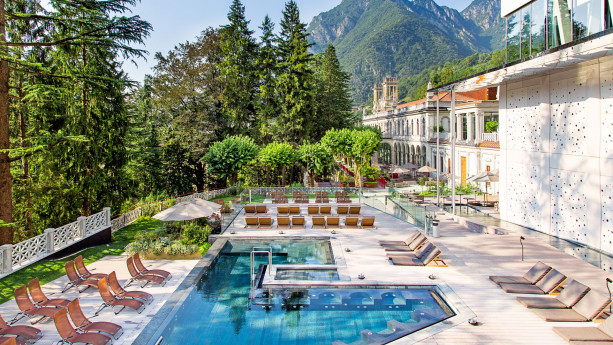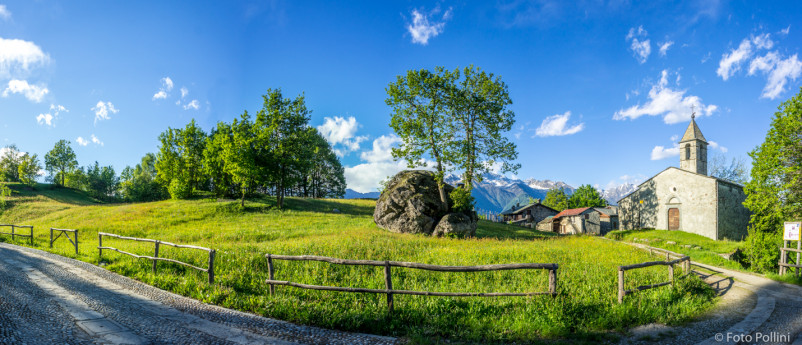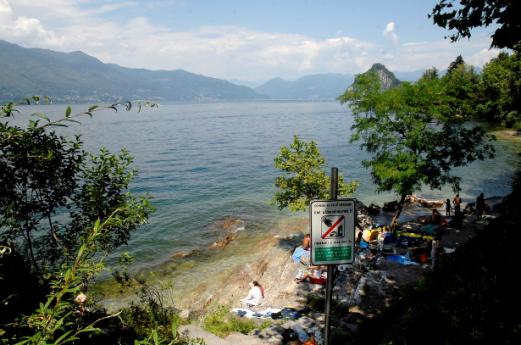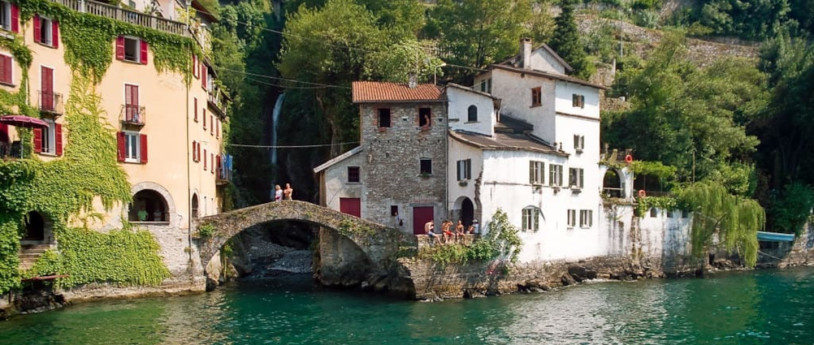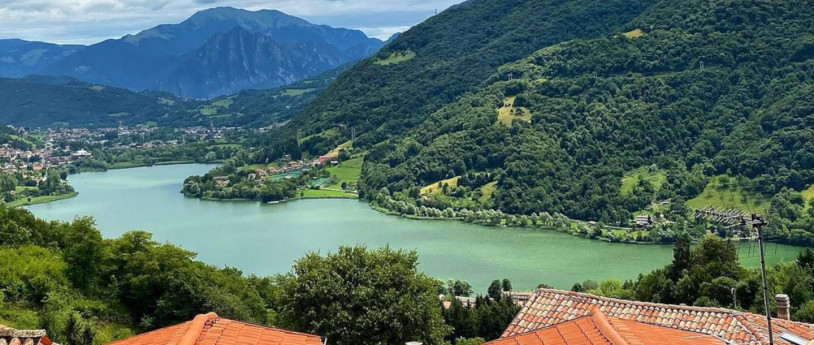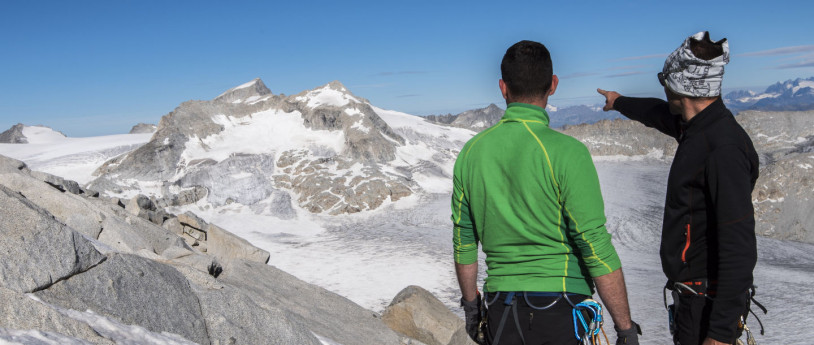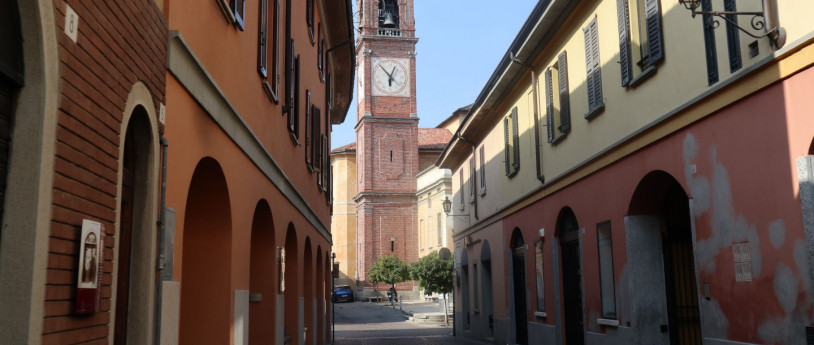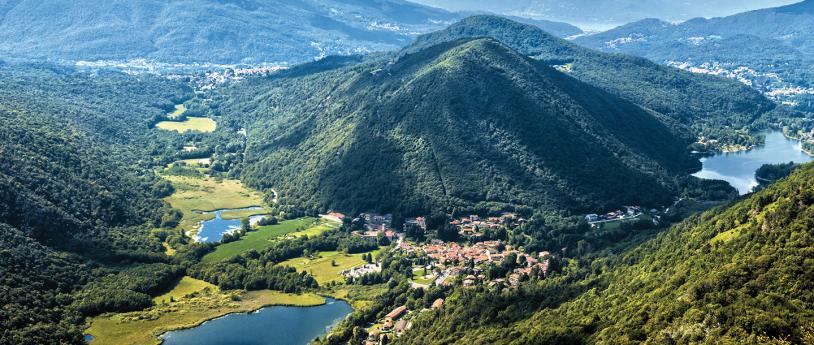Mountains with ancient history: Valle Camonica
These mountains guard a World Heritage Site and offer nature holidays spent climbing, walking and pedalling ExcursionsThe Valle Camonica is a wide, level valley in the central Alps. Crossed by the River Oglio, dominated by the Adamello mountain range, the valley is home to one of the world’s biggest collections of prehistoric rock art, the first site in Italy to be added to the list of UNESCO World Heritage sites. This area, with its many lakes, mountains, nature parks and immense landscapes, takes visitors back ten thousand years on a journey in time from the Mesolithic period to modern day. 5 mountain refuges on a circular route of Val MalgaA lovely one-day trail from Ponte del Guat (Guat bridge) in Val Malga takes hikers across the valley, discovering the welcoming mountain refuges of Valle Camonica Premassone, Tonolini, Baitone and Gnutti. The latter marks the start of an alpine trail that then leads up to the top of the Adamello. The Val Malga hike calls for some care on the stretch between the Gnutti and Baitone refuges and can be completed in 4 hours. Meanwhile, those preferring a hike lasting several days can follow the Alta Via dell'Adamello (Path/Sentiero no. 1), a wonderful trail, but only for fit hikers carrying all the equipment needed for high alpine routes. It includes in fact some rather exposed via ferratas (with fixed ropes, ladders, etc.). This route goes from Breno to Edolo and must only be undertaken by very expert hikers or with mountain guides. Each stage and each mountain refuge are starting points for short-medium hikes. The route can however also be enjoyed as one-day hikes, thanks to paths that link it with the valley bottom. Three-day Glacier hikeThe Adamello also offers the chance to enjoy the experience of a hike to the glacier. The Pian di Neve is a hikers’ dream because on clear days it allows amazing views reaching as far as Monte Rosa. Mountaineering fans can, on the other hand, test their skills along the skills along the Sentiero dei Fiori, a panoramic ferrata that ensures incredible views, suitable for experienced hikers.. The Oglio cycle pathFrom gentler walks to hikes uphill or along the trails and steep downhill unmade paths:discovering Vale Camonica by bike is spectacular. A cycle and pedestrian path starts at the Passo del Tonale pass, linking no fewer than 280 km of paths along the Oglio riverbanks and winding through the varied landscape of the valley, until it comes to the banks of Lake Iseo and through the Franciacorta vineyards. For keen mountain bikers,the Adamello Bike Arena offers more than 500 km of trails between the Valle Camonica and Va di Sole valleys, even entering the Stelvio and Adamello nature parks. The Passo del Tonale also has downhill and free-ride trails. Bienno, one of Italy’s most beautiful villages In Biennio, which belongs to the Club de I Borghi più belli d’Italia (“The most beautiful villages in Italy” club) visitors get a chance to relive a medieval atmosphere. Walking down its streets, they can see characteristic houses, towers and noble buildings, visit the Fucina Museo (Forge Museum) with its impressive waterpowered trip hammer and the (also water-powered) mill with adjacent museum of country life. A must-visit is the church of Santa Maria Annunciata, which still has beautiful frescos by Romanino, one of the most important painters from the Lombardy school and by the local artist Pietr da Cenno and his atelier. Highlights1. Art. Worth a visit are the Pieve di San Siro church and the Monastero di San Salvatore in Capo di Ponte, both evidence of Romanesque architecture in Valle Camonica, and the Shrine to the Via Crucis in Cerveno with the Sacro Monte, or Sacred Mountain. 2. History. Valle Camonica, also known as Valle dei Segni, or the Valley of Signs, conserves a huge heritage of rock engravings. The Naquane National Park in Capo di Ponte and the MUPRE (National Museum of Prehistory) in Valle Camonica are both must visits. There are other parks in Dafro Boario Terme, Ceto, Cimbergo, Paspardo, Sellero, Sonico and Ossimo. 3. Sport. Renowned as an active holiday destination in both summer and winter, Valle Camonica has plenty to offer (hiking, MTB and road bike paths, cycling tourism, climbing, skiing, snowboarding, snowshoe walking and much more) with Ponte di Legno - Tonale,Borno, Montecampione and the Aprica mountain pass. 4. Food and wine. Foodies should check out the local dairy products, especially Fatulì (a Slow Food Presidium), a smoked goat’s cheese made with raw milk from the Bionda dell’Adamello goat, which can be tasted in the mountain refuges in Val Saviore and Silter Doc, a mountain cheese made with raw cow’s milk. 5. Events. In June, the Fiera della Sostenibilità della Natura Alpina is a sustainability fair organised by the Valle Camonica Mountain Community – Adamello Park. A must-visit is the Market-Exhibition in Bienno, with over 200 exhibitors from all over Italy and stalls with typical traditional valley dishes. Finally, the “Del Bene e del Bello” exhibition of cultural heritage.
